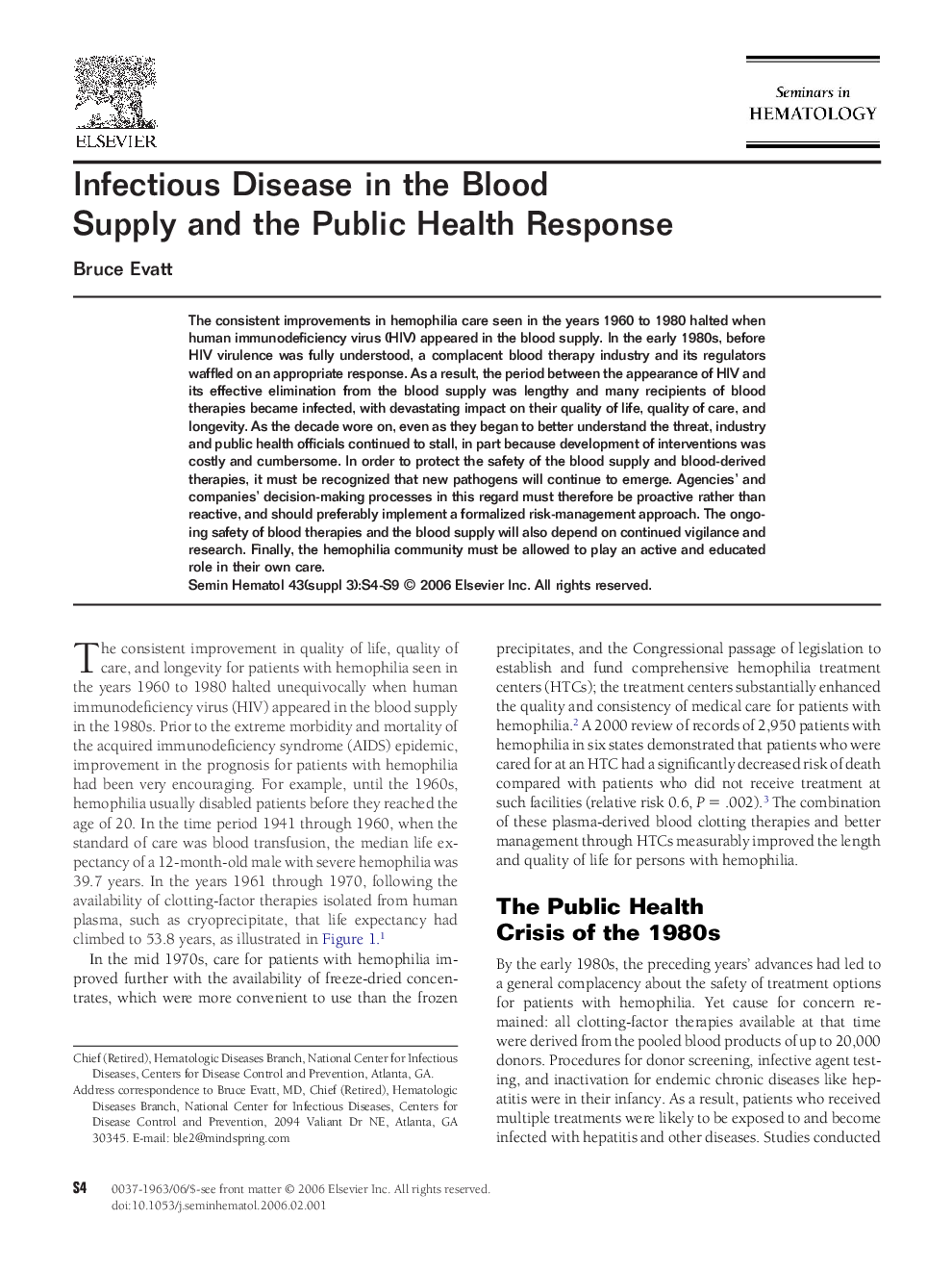| Article ID | Journal | Published Year | Pages | File Type |
|---|---|---|---|---|
| 3333826 | Seminars in Hematology | 2006 | 6 Pages |
The consistent improvements in hemophilia care seen in the years 1960 to 1980 halted when human immunodeficiency virus (HIV) appeared in the blood supply. In the early 1980s, before HIV virulence was fully understood, a complacent blood therapy industry and its regulators waffled on an appropriate response. As a result, the period between the appearance of HIV and its effective elimination from the blood supply was lengthy and many recipients of blood therapies became infected, with devastating impact on their quality of life, quality of care, and longevity. As the decade wore on, even as they began to better understand the threat, industry and public health officials continued to stall, in part because development of interventions was costly and cumbersome. In order to protect the safety of the blood supply and blood-derived therapies, it must be recognized that new pathogens will continue to emerge. Agencies’ and companies’ decision-making processes in this regard must therefore be proactive rather than reactive, and should preferably implement a formalized risk-management approach. The ongoing safety of blood therapies and the blood supply will also depend on continued vigilance and research. Finally, the hemophilia community must be allowed to play an active and educated role in their own care.
